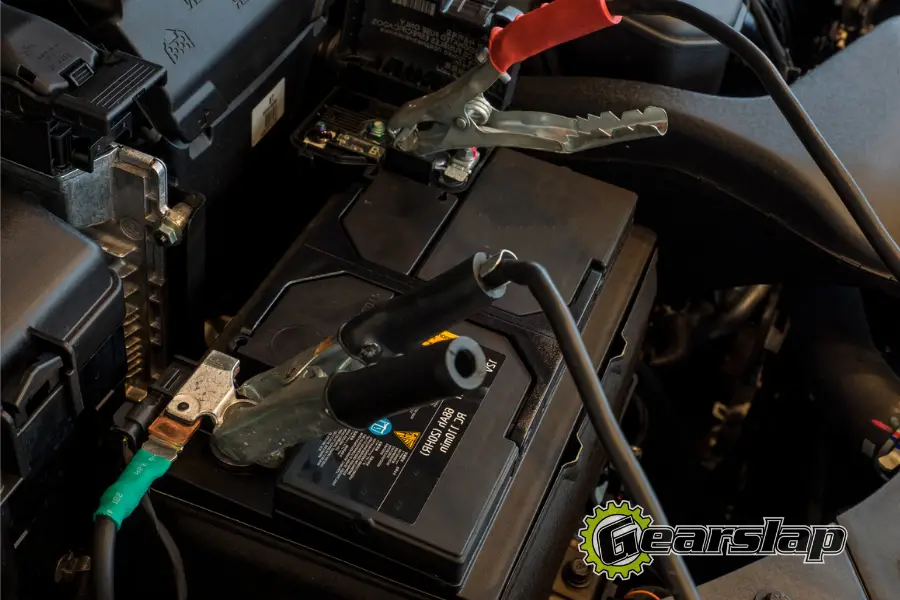When a fuse blows, it indicates an electrical problem that caused the amperage to exceed the maximum allowable for that circuit. A bad circuit left unchecked could overheat and potentially cause damage or even a fire. So, always do your fuse troubleshooting carefully.
Even if we suspect a minor issue, we must take the time to make sure we don’t take any shortcuts. Otherwise, we could potentially cause a more significant issue for ourselves.
What Are Fuses For (in Cars)?
Fuses are electrical components designed to interrupt a circuit if it becomes overloaded. In a car, those circuits can carry power for everything from accessories like lighting, windshield wipers, and the horn to even more vital systems like the starter, ignition system, and more.
How Does a Fuse Work?
Household fuses are different from automotive fuses. But even just in the world of cars, fuses come in an array of sizes, shapes, and colors.
A typical modern automotive fuse has a plastic, color-coded housing with a blade-style connector. The housing’s color reflects the amperage it can handle. The blade connector is a thin metal strip that slips into a fuse panel, where it completes a circuit.
At the back of the fuse, inside of the plastic, there is a thin strip of wire. If the circuit becomes overloaded, that strip melts, interrupting the circuit and halting the flow of power through it before damage occurs.
In addition to fuses inside of a fuse box, we might also find inline fuses. These fuses are typically for electrical accessories that are easy to damage, like low-hanging fog lights or aftermarket add-ons like air horns. They look and work the same. But, they’re in a remote location, sometimes inside a wiring harness or alongside a particular component.
How Do You Find a Short in a Car?
Blown fuse got you down? If there is a fuse that keeps blowing or a component that isn’t working, it’s quite possible that there is a short in that circuit.
Sometimes, that can be an easy fix, even if we’re not a DIY mechanic. We must ensure the car is off, and cooled down, so we don’t lean on the hot engine or exhaust and burn ourselves. Now we can pop the hood.
Inside the fuse box, or sometimes in the owner’s manual, there is a schematic that indicates each fuse’s location, sizing, and purpose. So, for instance, if our headlights aren’t working, go and find the fuse for our headlights. There might be more than one.
On some vehicles, the back of the fuse will be see-through, so we can look for breaks in the little wire without pulling it out. Other vehicles require us to pull the fuse to inspect it. Sometimes the manufacturer includes a small plastic plier for doing so. We might be able to use our fingers, but if not, use a set of needle-nose pliers.
In our example, pull out the fuse for the headlights. If we see it is burned out, throw it away and obtain an exact replacement. Never switch sizes, as doing so could lead to major damage.
Now go and inspect your headlights. Are they damaged? Is there damage to the wiring coming out of the back of them? Consider if you have recently done other work that might have crimped a wire, caused something to get wet, or even cracked the lens. If you find obvious damage, fix it or replace the component.
If it’s not obvious, or you think you’ve made a fix, insert a new fuse. Turn the car on, and then turn on the headlights. If everything works, we’re done. If the fuse blows again, we still have an issue. Try jiggling the wires a bit and repeating the process. If there is an intermittent short, it may be quite difficult to trace.
But we can use a multimeter to do voltage and resistance testing. We need to be pretty comfortable with vehicle repairs and electricity to do this, so be careful and consider hiring a mechanic. Here’s how:
- Ensure the component is off
- Remove the blown fuse
- Insert a prong from your multimeter into each side of the fuse terminal
- Once both prongs are in place, have a helper turn the component on
- Holding your multimeter, shake each individual connection and wire
- If the multimeter reading changes, you just found a damaged or loose wire
Now we can make our repairs. If this hasn’t worked, we may have bad ground, an overheating circuit, or a larger issue that will probably require a professional.
Fuses and Check Engine Lights
When certain fuses blow, the car’s onboard computer might detect an issue, triggering a Check Engine Light (CEL). When that happens, we should take action right away. And it doesn’t involve using a piece of electrical tape to cover the indicator light on the dashboard!
Can a blown fuse cause a check engine light?
It depends on the car and the particular fuse that’s blown. For instance, if a fuse blows on our braking system, our anti-lock braking light might illuminate. If a fuse for an engine component blows, it might throw a different light or symbol on our dashboard.
Modern cars have lots of computers, so they very well might detect the issue and let us know about it.
Is there a fuse for a check engine light?
There might very well be a fuse associated with a CEL. We might be able to save ourselves some money in the long run by purchasing a code reader for our car. These readers can plug into a port on our car and read out the error codes stored and the computer, revealing the source of our check engine light.
Then we can use our fuse schematic to find the right fuses and check to see if they’re blown.
What fuse do I need to reset the check engine light?
Cars are complicated. There isn’t a particular fuse for all CELs. Unless none of our dashboard lights are coming on, that might mean the fuse for the instrument cluster, or interior vehicle lighting is our culprit.
What fuses will make a car not start?
There are any number of fuses that might make a car not start. Older cars only had a few fuses, whereas modern vehicles can have hundreds.
At the simplest end of the spectrum, some cars have inline fuses near their battery terminal connections. Modern cars have advanced batteries designed to power our growing list of electronic devices, like Bluetooth and connected systems. So, if our car isn’t starting, it’s not a bad idea to check these first.
At the more major end of the spectrum, if our car’s fuel system has shorted out, we might also find we’ve blown a fuse. But we’ll have to fix the damaged or shorted-out component before we can replace the fuse.
Where is the ignition fuse located on most cars (inside the car or engine compartment fuse box)?
Cars from different manufacturers are extremely different. We should check our owner’s manual to find the location of our fuse box. Some vehicles have more than one.
Even within a brand, there can be considerable variation. And with more and more electric and hybrid vehicles on the road, there is even more variability, especially when compared to the days when





